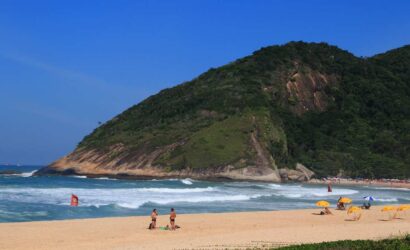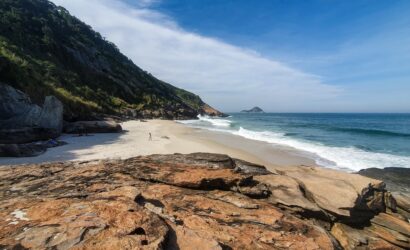Grumari and
Wild
Beaches
Talking a little about
Grumari is a neighborhood in the administrative region of Barra da Tijuca, in the Western Zone of the municipality of Rio de Janeiro. It is famous for its wild beaches, including the main one, Grumari Beach, as well as the beaches of Perigoso, Meio, Funda, and Inferno, all of which can be accessed by trail or by sea. It borders the neighborhoods of Barra de Guaratiba and Recreio dos Bandeirantes.
Talking a little about
Wild Beaches: In contrast to its internationally renowned urban beaches, Rio de Janeiro’s wild beaches impress with their untouched appearance, lush nature, and, of course, the unique beauty of their waters. The beaches of Inferno, Funda, Meio, Perigoso, and Búzios are located away from the city center and the South Zone. They are in the western region of the Marvelous City, between Grumari and Barra de Guaratiba, and can be accessed by trail or boat.
Region
Southeast
Type of tours
Half day
Climate
Atlantic tropical
Include
Transfer, lunch
Some
Curiosities (Grumari)
Grumari is known for being one of the most preserved and wild beaches in Rio de Janeiro. It is part of the Grumari Environmental Protection Area (APA), which means its natural beauty and ecosystem are carefully conserved.
Grumari Beach has served as a backdrop for various film and television productions. Its untouched and stunning landscape has been featured in Brazilian and international films and series.
Part of Grumari is known as Praia do Abricó and is one of the few nudist beaches in Rio de Janeiro. Although not mandatory, many people choose to practice nudism in this area of the beach.
Grumari is a popular spot for surfers, especially those who prefer calmer and less crowded waves. The beach offers favorable conditions for beginner and intermediate surfers.
Access to Grumari is limited to private vehicles, which helps keep the beach more isolated and less crowded compared to other beaches in the city. It’s important to note that car access is allowed only up to a certain point, and the final part of the journey to the beach must be done on foot.


Some
Curiosities (Wild Beaches)
The wild beaches of Rio de Janeiro are often located in environmental protection areas, such as the Grumari Environmental Protection Area (APA). This means that the natural beauty and ecosystem of these beaches are protected and conserved.
Most wild beaches in Rio are not accessible by roads or public transportation. Visitors typically need to hike to reach these beaches, creating a more secluded and tranquil experience.
Due to their limited access and low development, wild beaches often have a more natural and untouched feel. They are ideal for those looking to escape the crowds and appreciate nature.
Many of the wild beaches in Rio de Janeiro are popular among surfers due to consistent waves and less crowding. Additionally, these beaches often offer opportunities for hiking and nature walks.
Some of the wild beaches allow for nudism, although it’s not mandatory. Beaches like Praia do Abricó in Grumari are known to attract people who prefer practicing nudism in a more natural and secluded environment.












